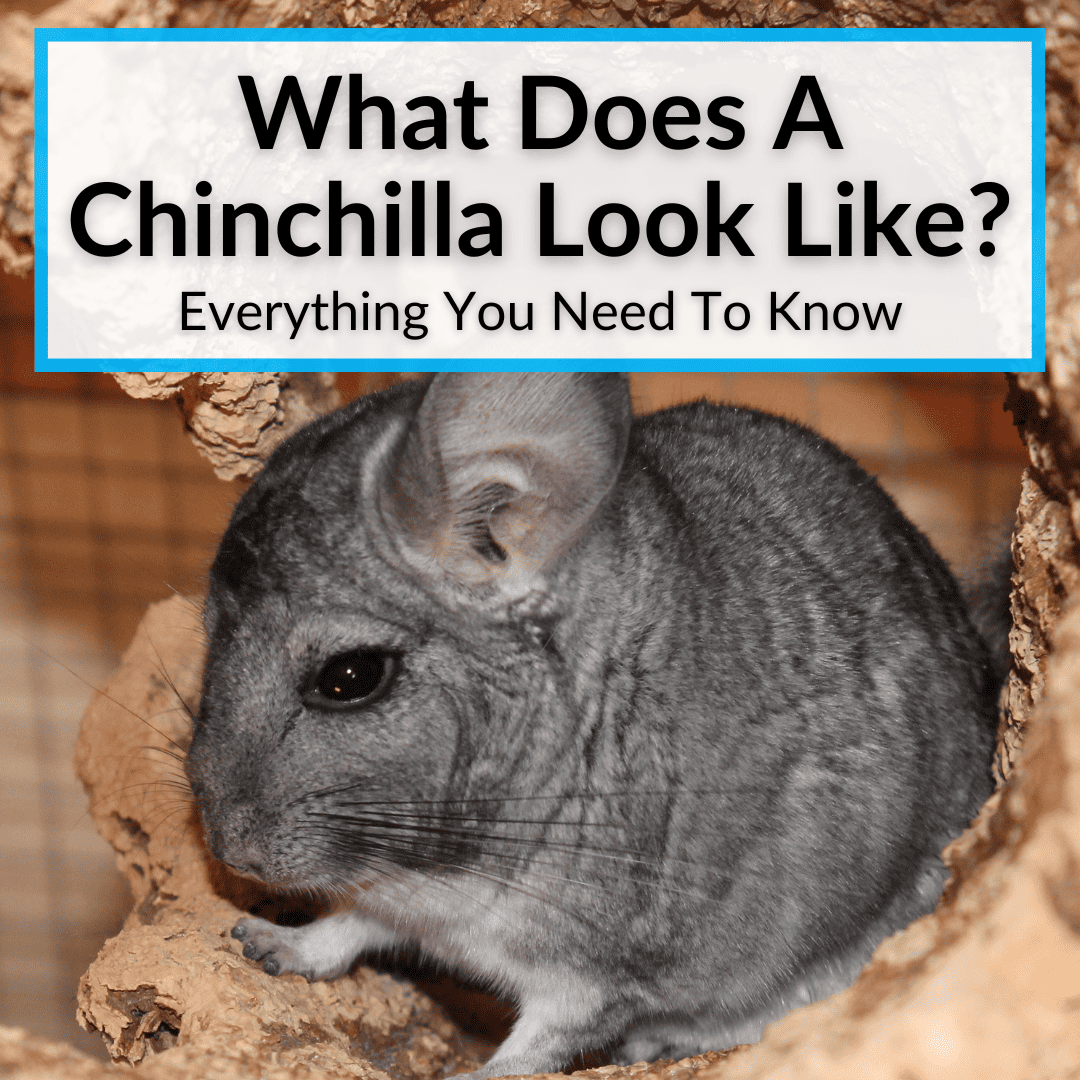
Or that it is the softest.
Maybe those are true and maybe not.
But one thing is for certain: it is close.
The chinchilla is, without a doubt, among the cutest, fluffiest, and softest animals on earth.
So what does a chinchilla look like exactly?
Well, the photos here will tell you a lot. And the rest of this article will tell you even more. Keep reading to learn everything you need to know about the chinchilla’s appearance.
Contents
What Does A Chinchilla Look Like?
Chinchillas are small, rabbit-sized rodents native to the South American Andes Mountains. They have ears like a mouse and thick fur that is the densest and softest among all land mammals.
Chinchillas grow to about 10 to 14 inches in length. They are mostly blue-gray in color, although breeders are also breeding chinchillas in gray, white, violet, sapphire, beige, and combinations thereof.
Physical Appearance Of A Chinchilla
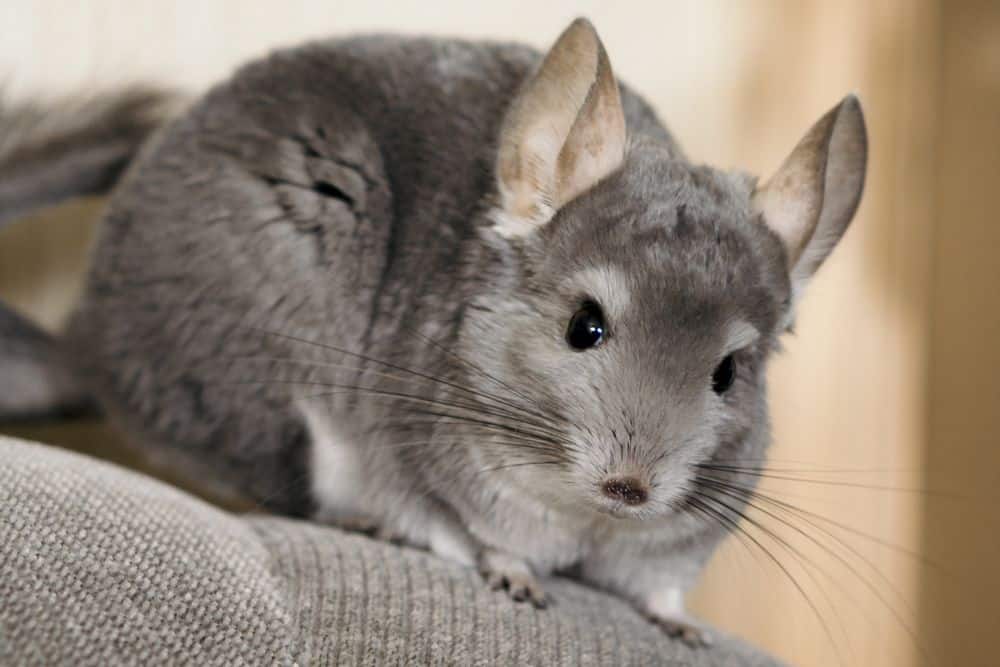
Chinchillas are small, soft-furred rodents with a variety of coat colors, large round eyes, large ears covered in fur, a bushy tail, and a distinctive physical build adapted for their active lifestyle that involves a lot of climbing and jumping.
They have compact, stocky, and rounded bodies well suited for running, jumping, and climbing. Here is a more detailed description of the chinchilla, one characteristic at a time.
Size And Body Shape
As mentioned above, chinchillas resemble small rabbits or rodents. Typically, they measure 10 to 14 inches (23 to 36 cm) long, including the tail. The average chinchilla weighs 1 to 1.76 pounds (450 to 800 grams).
Chinchillas have compact and stocky bodies with a rounded appearance. They have a strong, muscular build and their limbs are well-suited for jumping and climbing.
Tail
Chinchillas have bushy tails that help keep them warm in the arid, cold climate of their natural habitat. The tail also helps the animal balance when it jumps and climbs.
Short-tailed chinchillas have tails measuring around 10 cm (4 inches), while long-tailed chinchillas have tails measuring 13 cm (5 inches).
Coat And Colors
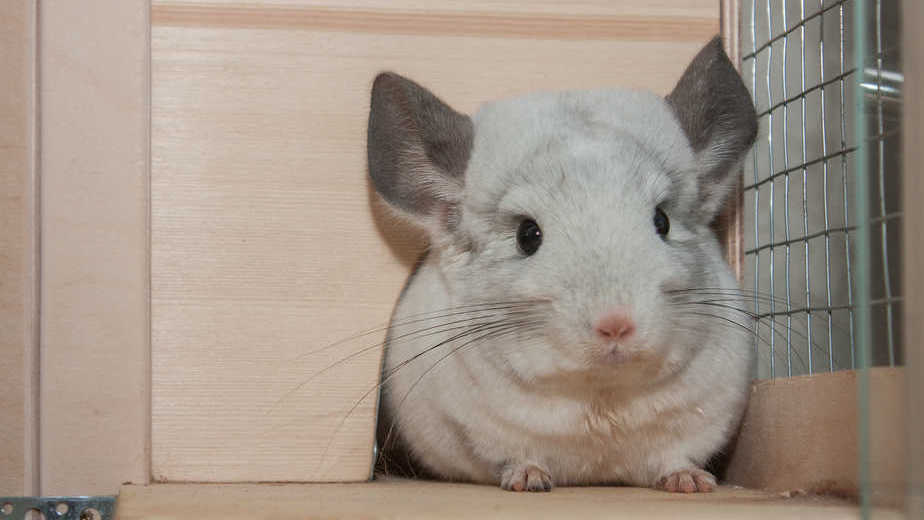
The chinchilla’s coat is highly dense, silky-soft, and warm. The species has the thickest and softest coat among land mammals. The reason behind this thickness is that each hair follicle contains almost 60 hairs (or about 20,000 hairs per square centimeter).
That is why you should not bathe your chinchilla. Its fur takes a long time to dry. The water left at the base of the coat can become a breeding ground for bacteria and fungi.
Chinchillas are available in a number of different coat colors. Gray is the most common and the cheapest. Here are the main coat colors.
- Standard grey: the standard gray chinchilla has a bluish-gray color
- Beige: the beige chinchilla is lighter than the grey and has red ears and eyes
- Ebony or black: the ebony or black chinchilla is all black
- Violet: a violet coat color is a relatively rare genetic mutation; breeders use special genetic variations and breed two carriers with this variation to create this coat color
- White: like black, the white chinchilla is just as it sounds, meaning completely white
- Mosaic: this is a combination of gray, beige, and other colors
Eyes
Since chinchillas are active after dusk, they have well-developed eyesight for seeing in low-light conditions. Their eyes are round and large, with dark irises.
Ears

Chinchillas have large ears like rabbits, which makes them sensitive to the smallest of sounds. Make sure you keep your chinchilla’s cage in a quiet place away from loud noises. These prey animals startle easily.
Legs
Chinchillas have strong legs that enable them to climb and jump. The front legs help them hold food and objects, while the hind legs are slightly longer and more muscular and help them navigate across rocky terrain.
Teeth
Chinchillas, like most rodents, have ever-growing rootless teeth. They have a total of 20 teeth, of which 4 are incisors and 16 are molars. Chinchillas need hay and gnawing objects to help wear down their ever-growing teeth.
Whiskers
Chinchillas have whiskers, or vibrissae, that help them navigate in low-light conditions. The whiskers also play a social role in that the longer the chinchilla’s whiskers, the more dominant it is in its herd.
How Much Of A Chinchilla Is Fur? Are Chinchillas Fluffy?
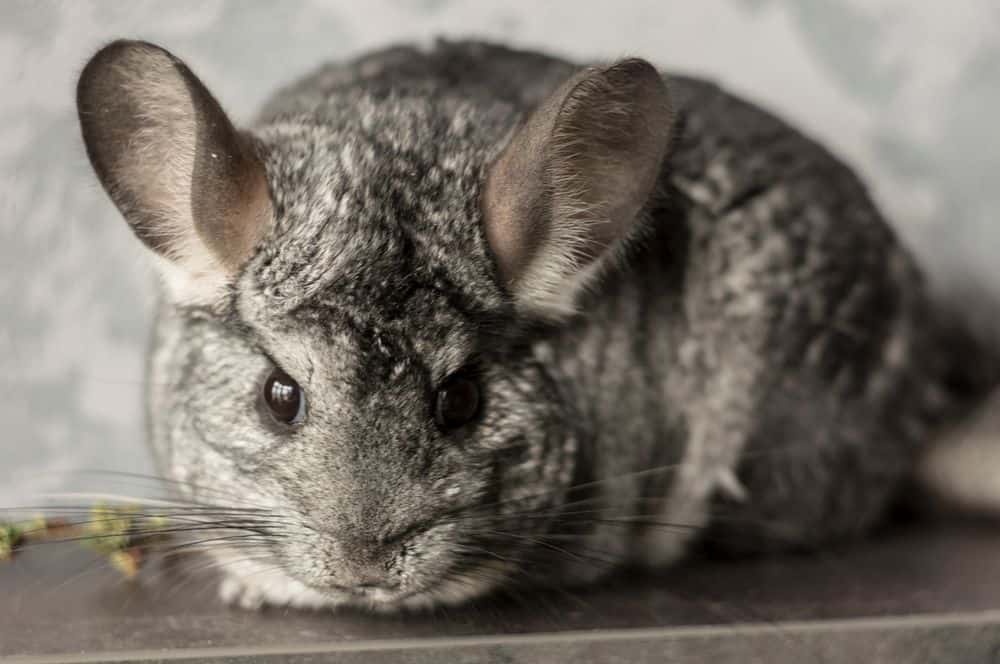
Chinchillas are extremely furry and fluffy. They are among the fluffiest of land mammals. This is also why the species has been hunted since time immemorial. Their fur is extremely soft and thick and finds use in making gloves, hats, jackets, etc.
This extensive poaching of chinchillas even led to their becoming endangered. Thankfully, governments have now banned the hunting and killing of chinchillas. However, that has not stopped domesticated or captive-bred chinchillas from being killed for their fur and meat.
Chinchilla fur is long and thick. It is about 1-inch long. As mentioned above, each follicle grows about 50 to 60 hairs, which makes it very dense. To give you a perspective, humans grow only 1 to 2 hairs per follicle, so you can imagine how thick and fluffy chinchillas really are!
Difference In Appearance Between Different Types Of Chinchillas
There are two types of chinchillas based on their length: the short-tailed and the long-tailed chinchilla. Based on these types, you have different coat colors and physical characteristics.
Short-Tailed Chinchillas
The short-tailed chinchilla is scientifically known as chinchilla brevicaudata. The species is extinct in Chile but a few populations are still around in Bolivia.
As the name indicates, the short-tailed chinchilla has a shorter tail measuring around 3 to 4 inches (7 to 10 centimeters) in length. Their fur is also denser and silkier and they are available in colors like violet, gray, black, etc.
Long-Tailed Chinchillas
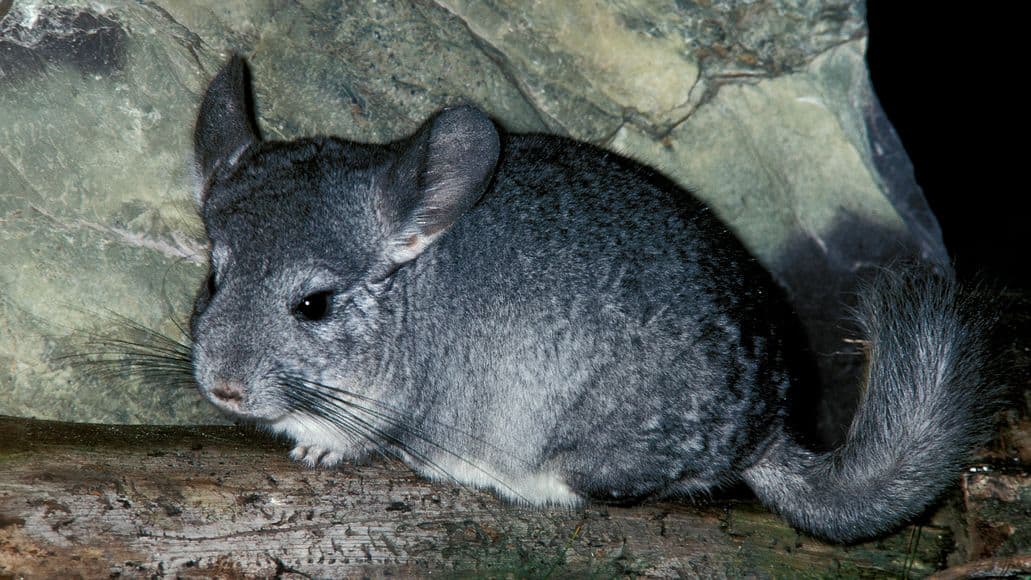
The scientific name of the long-tailed chinchilla is chinchilla lanigera. They are also known as Chilean chinchillas or lesser chinchillas.
As their name implies, this species has a longer tail measuring about 5 to 6 inches (12 to 15 centimeters). Due to their longer tails, the lanigera variety of chinchillas is more popular as pets and in the fur industry. Their dense coats are available in various colors like gray, ebony, black, and beige.
Here is a table summarizing the differences between long-tailed and short-tailed chinchillas.
| Type | Short-Tailed Chinchilla (Chinchilla Brevicaudata) | Long-Tailed Chinchilla (Chinchilla Lanigera) |
|---|---|---|
| Size | 3-4-inch tail with a total length of 10-12 inches | 5-inch bushy tail with a total length of 12-14 inches |
| Face | Rounder face | Pointier face |
| Eyes | Not deep set | Deeper set eyes |
| Neck | Shorter and thicker neck | Longer and narrower neck |
| Ears | Shorter ears | Longer ears |
| Colors | Violet, sapphire, blue, grey, and black | Beige, ebony, and white |
| Fur Texture | Denser and silkier | Slightly coarse and not as dense |
| Gestation Period | 128 days | 111 days |
| Status | Endangered or even extinct. Their populations are very low even in the wild. | Captive bred Chinchilla lanigera is doing fairly well and is not endangered. They are widely kept as pets. |
Chinchilla Appearance: Final Thoughts
The photos in this article answer the question “What does a chinchilla look like?” in broad terms. The rest of the article went into much more detail. You should now have a good understanding of the physical appearance of a chinchilla.
Of course, different chinchillas do not all look the same. There are two different types and each type can have different fur colors, eye colors, sizes and more. There is quite a bit of variation, but all chinchillas do have the same distinct characteristics described above.
Leave a Reply